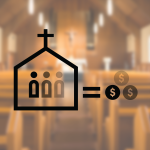What challenges & opportunities nonprofit teams should expect
It’s estimated that most New Year’s resolutions fail around mid-February to early March. Yet, as I’m sure you know, the first few months of a new year is no time to let your momentum wane – especially after your year-end fundraising efforts have hopefully welcomed new donors to your community!
New opportunities and challenges await your organization at every twist and turn in the rest of the year to come. Together, we look for a map that can guide us forward, and offer a helpful perspective on what’s ahead.
Every year, I look forward to the high-level forecasting which many of BDI’s readers have come to know as my annual SWOT Analysis. For reference and because much of the sample applies this coming year, you can take a look at last year’s analysis of philanthropy.
As we close out the first quarter of 2024, and consider the uncharted terrain to come as donor-supported charitable work continues in an environment of perpetual uncertainty, it’s once again important we consider the Strengths, Weaknesses, Opportunities and Threats (or, SWOT) before us. But first, a quick look back. Over the last 12-18 months, seismic shifts in culture, technology and the global economy have left many in our industry at risk of crumbling… while others stand strong.
Emerging technologies like artificial intelligence (AI), changing motivations and donor morale, along with looming crises (and their corollary opportunities) are reshaping the way we approach fundraising and philanthropy. What does this mean for nonprofits and the people like you who faithfully lead these organizations? Let’s take a look…
STRENGTHS (3 bright spots in 2024)
1) Embracing the Transformational Period.
We are living in an era of unprecedented technological advancement, which to many may feel reminiscent of the times when personal computers… the world wide web… or cellular phones became widespread. AI and other emerging data technologies are not just buzzwords or the next shiny thing in marketing – they are already revolutionizing the way we reach and engage donors.
Can we leverage these advancements to make our fundraising efforts more efficient and effective? Absolutely. This transformational period we are in is a strength, offering unique opportunities for nonprofits willing to pivot, adapt and innovate.
2) The Power of Change Movements.
In a world fraught with challenges, people yearn to be part of something bigger than themselves. They want their contributions to fuel change and create meaningful impact, especially in the face of crisis. We saw this in part with the surge of generosity during the COVID years… and I believe we will see this again as we are bold and willing to share the ongoing “crises” motivating many of our causes – whether that be the crisis of homelessness, hunger or yet another unaddressed need.
When donors feel a deep and personal connection to a cause and believe their contribution can make a difference, they are more motivated to give. So, how can we tap into this desire for positive change? By effectively communicating our mission and inspiring donors to join our movements, we position ourselves for success in 2024.
Effective, authentic and transparent storytelling, while demonstrating to supporters the actual human impact of our work, is absolutely vital to engaging them and successfully appealing for their support – especially when the economy is so volatile and many seek to make precious financial resources stretch further.
3) Unleashing the Power of Collaboration.
Last October I attended the International Fundraising Congress in the Netherlands, a gathering of leading representatives of service agencies fueling charitable causes in more than 40 different nations. By far, one of my most encouraging and significant takeaways was that although economic crises may loom – and even in an environment of systemic polycrises – generosity itself does not evaporate.
As I conferred with representatives from some of Europe’s most struggling nations financially – Ukraine, Greece and others – I was encouraged to learn of the strength they found through greater collaboration and less competition with similar charities in their field.
Their success is proof that pooling resources with other nonprofits, especially the sharing of knowledge and best practices, can lead to greater impact and efficiency, and fewer redundancies of services. Through collaboration, we are generous with learnings, tackle complex challenges together and maximize our collective impact in hurting lives. As we move into 2024, the power of collaboration cannot be underestimated. I encourage you to consider who may be a worthy, beneficial partner to your local cause in the months ahead.
WEAKNESSES (3 areas to watch closely in 2024)
1) The Challenges of Lagging Data.
Every year, my colleagues and I await with bated breath the landmark reports and research findings from leaders in our field like the Giving Institute or the Lilly Endowment. While not to diminish the critical work of these pillars in philanthropy, we must consider the timeliness of the data these reports are based upon – and the timeliness of the data that informs the important decisions we as organizational leaders must make.
Take for example, the Giving USA Annual Report on Philanthropy – released each year in summer, these findings are typically based upon tax returns from the prior year. This means some of our most-trusted insights are drawn from donor behavior from two years ago. While the data remains valuable, this lag is a challenge that needs to be addressed and discussed with transparency among the players in our field. Nonprofits must find ways to access real-time data and insights that inform the strategic decisions they are making when it comes to fundraising.
2) The Decline in Individual Giving.
According to latest research, giving by individuals has declined over 6% in recent years, and makes up less than 70% of total giving in the US for the fifth year in a row. To reverse this trend, nonprofits must find innovative ways to engage individual donors and inspire them to give. How can we begin to address this area of weakness? By building strong relationships with our donors and partners, telling compelling stories that inspire their trust and demonstrating the impact of their donations to change lives.
And we must also not shy away from being honest with our supporters about the shocking, devastating truth of what will happen if our organizations cease to exist and our services to help others go away. Another common theme of the discourse at the International Fundraising Congress is that truly engaged donors do not run away from crisis (even when they too may be struggling!). Rather, they turn toward ways to help. Painting the stark realities of need can be a strong motivator of individual support.
3) Waning Religious Motivation to Give.
If we consider the biblical mandate of generosity – a tithe of 10 percent of one’s income, giving in the US has fallen drastically below that God-given standard. Today, Christians are giving only 2.5 percent of their income to places of worship and charitable causes combined… far below the 10 percent.
This may come as a shock and of great concern to organizations who depend upon a largely faith-based donor base, and gives good reason to diversify and find new avenues of connection. I’m not talking about watering down your convictions or abandoning your unique brand voice. Rather, how can your messaging shift – or even be segmented – to offer a broader, more diverse focus on the intricacies and impact of your work that may resonate with different audiences?
OPPORTUNITIES (3 areas to build up in 2024)
1) Leveraging AI and New Data Technology.
I believe we will look back at this time of rapid revolution and advancement in AI and pity those whose heads remained stuck in the sand. AI offers new avenues of opportunity for those willing to embrace the challenges that come with adopting something new.
I commend my colleagues at BDI who are aggressively exploring this new frontier and discovering ways it can be harnessed for greater impact to the benefit of our nonprofit client partners. Our in-house expert, Mike Rogers, BDI’s Chief Intelligence Officer, has led the charge of developing a robust data reporting and predictive modeling tool to empower nonprofits to better understand donor preferences, personalize and target communications and optimize fundraising strategies. And our Creative Team has found many powerful ways to harness this technology for good, not least of all image generation. I hope you’re as eager as we are to discover the difference AI can make for your organization.
2) Tapping into Crisis-Motivated Giving.
Nonprofit organizations often ask how they can engage younger donors, knowing that their motivations to give are sometimes starkly different than those of Baby Boomers and Gen X. My discussions with industry leaders at the International Fundraising Congress, as well as the Giving Institute’s Summer Symposium, have highlighted a common theme: Younger donors are increasingly motivated to give in response to crises, to help address and offer solutions to immediate needs. And while they may give less in average gifts, they do give, and they’ll give more often if and when they see the impact of their gift in the work they support.
Even organizations whose services run on an ongoing basis (like providing daily food, shelter, recovery, education, etc.), should look for opportunities to invite these younger donors to make an immediate impact. This is all in the way you present the need – as critical, dependent upon the donor’s action now as a solution. Emphasize their ability to make a difference during times of crisis to attract and engage more younger donors in 2024.
3) Harnessing Efficiencies through Collaboration.
Collaboration isn’t just a strength (as I discussed at length above) – it’s also a significant opportunity. I encourage you to seek out opportunities this new year to pool your resources, expertise and networks of partnership and support with other nonprofits in your field, as well as those outside who may have unique benefits to offer.
Our work to make an impact is not an “us versus them” game. Rather, we can amplify our impact and drive meaningful change in more lives when we open ourselves to collaboration and new partnerships. I encourage you to check out this session on the power of transformational partnerships, from BDI’s VP Client Strategy Brian Tucker and the Fresno Mission’s Chief Strategy Officer Nathan Freeland.
THREATS (3 pressure points in 2024)
1) Bankruptcy of the Trust Economy.
This is a threat worthy of greater discussion at length – one which I hope to broach with BDI’s audience in the coming year. For now, I want to simply bring it to your awareness so its effects don’t catch you off guard.
Due in part to an increasingly secularized culture and a decline in religious affiliation (also demonstrated by a fading tithe culture), we are living in a world today where trust is hard to come by. Americans struggle to trust their government… They question their media, as deep fakes and increased sophistication of AI imagery make it difficult to tell anymore what is real. So we can reason that donors today also question who they can trust when it comes to nonprofit organizations seeking their support. Nonprofits must find ways to build trust with their community and demonstrate the meaningful impact of their work.
2) Navigating an Environment of Polycrises.
Like other nations around the world have become accustomed to as their “norm,” in the United States of America today we now live in an environment of polycrises, which means there are multiple, concurrent volatile circumstances impacting the economy, social structure and philanthropy. With multiple crises happening at the same time, all worthy of attention and support, how can nonprofits possibly break through the noise of these many urgent and immediate needs? Nonprofits must be prepared to navigate the complex challenges of marketing in a world of polycrises and adapt their strategies accordingly.
Flexibility and resilience in this area starts with knowledge. Take time to inform yourself regularly of the plethora of threats facing you and your organization. I have made it a point to send bi-annual communications to the executive leaders BDI serves with my take on these polycrises throughout the year, and I look forward to hosting an exclusive CEO Forum during BDI’s Empower conference for our client partners this spring. It is critical that we equip and exhort one another to respond quickly to the changing circumstances we will no doubt encounter in the coming year.
3) Preparing for Potential Tax Deductibility Changes.
About three or four decades ago, roughly 40 percent of charitable giving was considered tax-deductible by the US government. Over the years, that percentage has been on the decline. And proposed legislation waiting approval on the desks of D.C.’s lawmakers today could potentially drop the allowable tax-deductibility to 13 percent!
A reduced tax deductibility could diminish people’s desire to give – especially those who have the most to give – without this guaranteed benefit to them. Nonprofits need to closely monitor any changes in tax laws and proactively communicate the importance of charitable giving to donors to counteract this threat.
In Summary: Bullish or Bearish in 2024?
The future is always uncertain. But as we look at 2024, it’s clear that we have both significant challenges and exciting opportunities ahead. We must tackle our weaknesses head-on, leverage our strengths to the fullest, seize our opportunities and mitigate the threats we face. I can promise you that the path forward won’t be easy. But it never is, right? That’s why cause work and developing sufficient support to fuel important causes takes smarts, courage, grit, collaboration and faith.
But, if we’re nimble in our strategies and eager to embrace innovation, I believe we can navigate the perpetually changing landscape and continue to drive meaningful change in the lives of our world’s most vulnerable and in need. We can continue to thrive. We must.
So, are we bullish or bearish about 2024? I’d say we’re cautiously optimistic… yet also realistic. We recognize the challenges, but we also see the tremendous potential for increasing impact in more lives. The world of philanthropy is changing, and we are ready to change with it. Here’s to a new year and to a future where our collective efforts create a more generous, more compassionate, more resilient world.
Check out our last Quick Shot – “3 Strategies for Building a Recognition Culture at Your Nonprofit”




